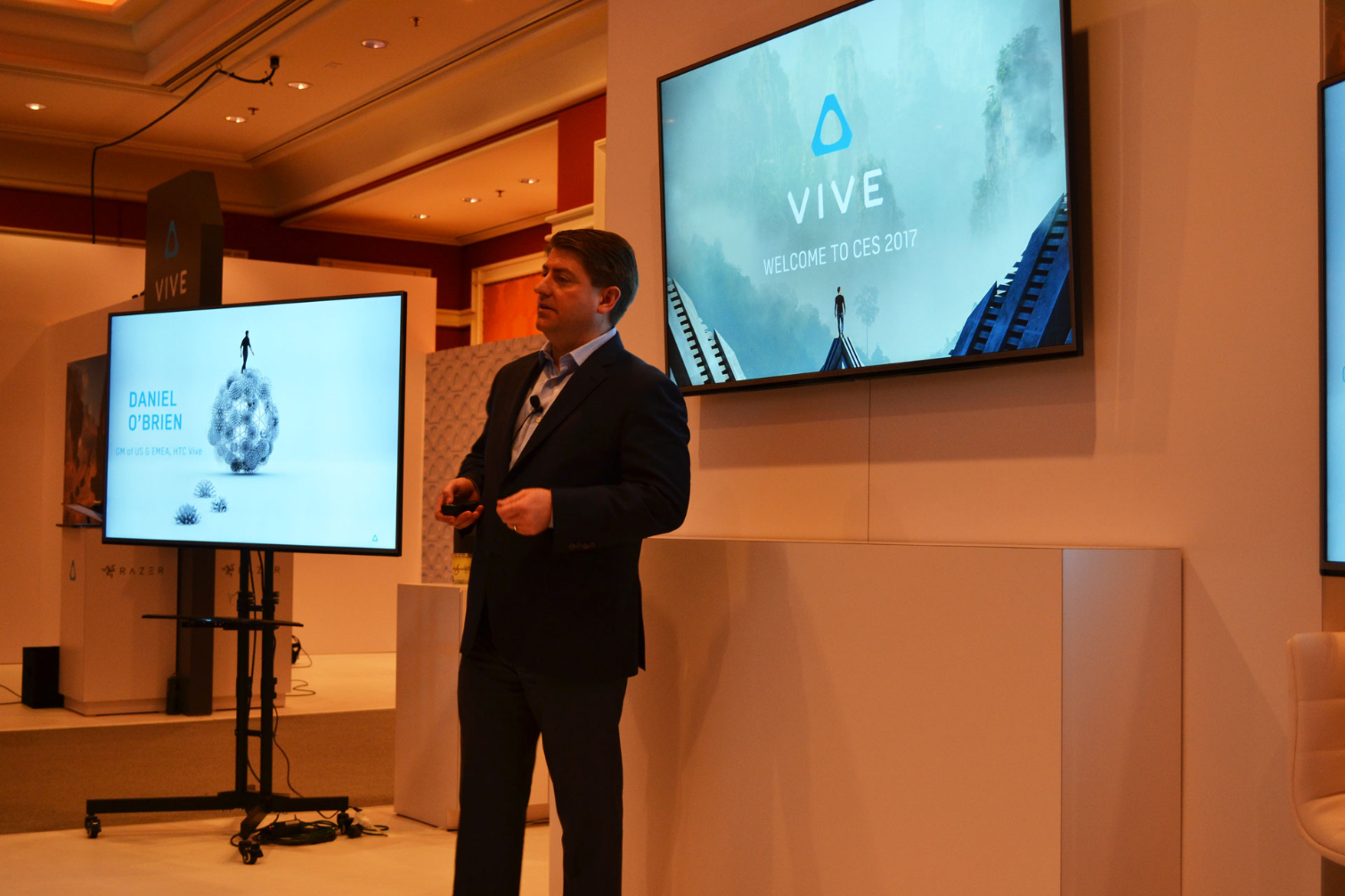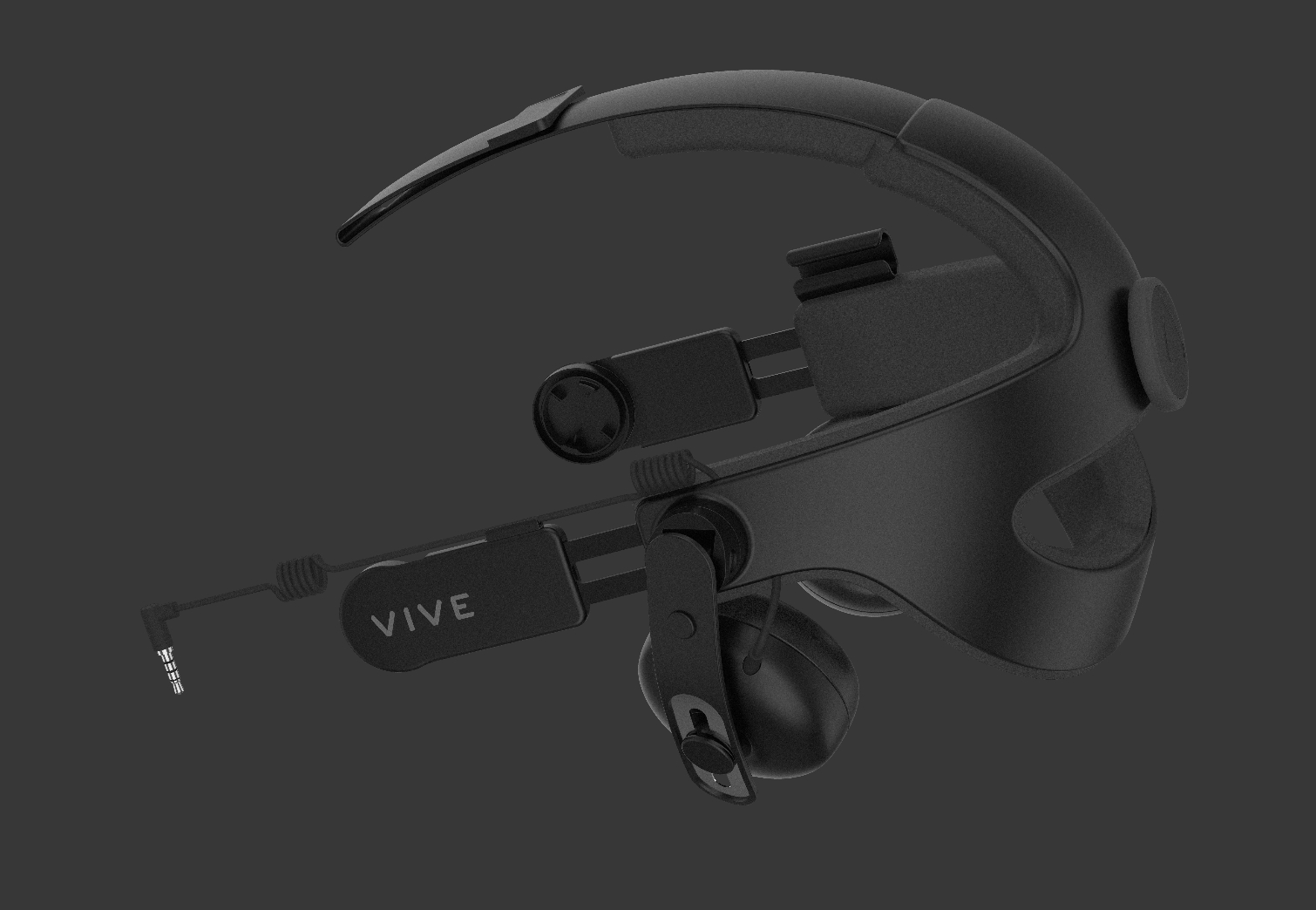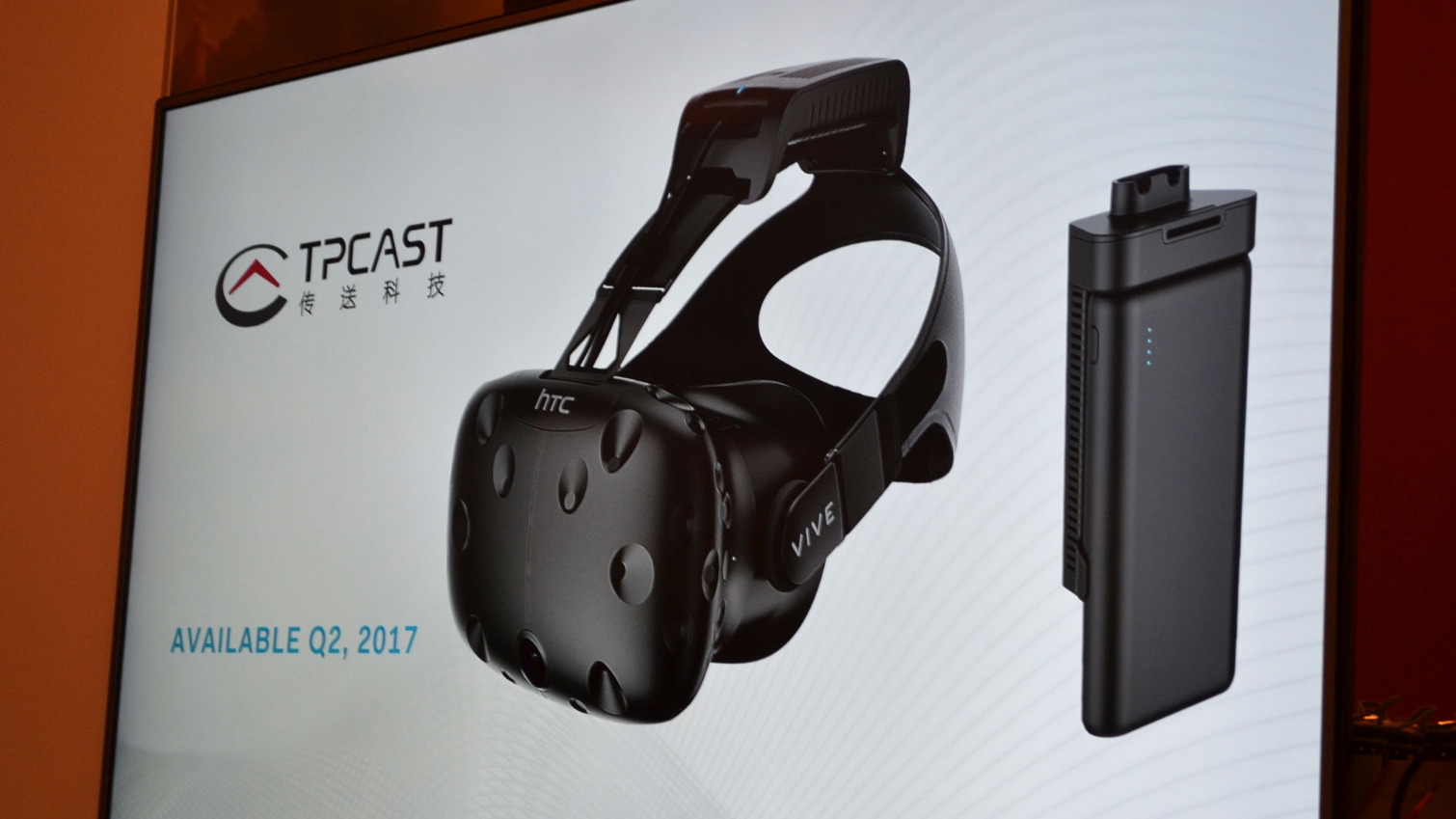HTC Reveals Expanded Vive Accessories Lineup Including Universal Tracking Device, Deluxe Audio Headstrap
Last year at CES, HTC revealed the Vive Pre, the company’s final developer kit model, which introduced the integrated camera’s “Tron Mode” chaperone feature and Mura correction. This year, HTC is focusing on enhancements to the Vive experience.
HTC's first year of VR was a success. The company received a variety of awards for the Vive VR HMD, including a Best of CES 2016 pick from Tom’s Hardware, and the Vive platform benefited from widespread developer support. During HTC Vive’s CES press conference, Dan O’Brien, Vice President and Executive Director of Emerging Products at HTC, said there are over 1,000 Vive supported titles available today, with approximately 30 titles added every day. Customer excitement hasn’t waned, either. Valve recently revealed that over 1,000 new Vive owners sign on to Steam every day.
With the Vive platform churning out content and picking up customers regularly, HTC turned its attention to enhancing the hardware with accessories.
HTC Vive announced two new accessories for the Vive that are coming to market in Q2 2017. During HTC Vive’s CES 2017 press conference, the company introduced the Vive Tracker, a universal Lighthouse tracked device that you can attach to any object to track it within VR.
Track Anything, Anything At All
The Vive Tracker features three ways to interface: It includes a micro USB port, which allows for tethered data transfer. The tracker also includes a set of analog GPIO pins, which hardware developers can use to attach third-party peripherals such as a light gun. In fact, HTC had a few examples of peripheral accessories on display. The company showed off a large rifle with a Vive Tracker attached to the top that you can use for first person shooters. HTC also had a VR camera peripheral on display, which lets you take screenshots of virtual experiences as if you were taking a picture of the real world.
“To foster the long-term growth of VR, we want to make it even easier for developers to prototype and market more immersive controllers and accessories,” said Daniel O’Brien, GM, US and EMEA, Vive. “The Vive Tracker is the first step in growing an ecosystem of third-party accessories that will change how we interact with virtual experiences and provide consumers and businesses with an unlimited amount of content opportunities.”
Get Tom's Hardware's best news and in-depth reviews, straight to your inbox.
HTC also demonstrated that the tracker could be used to enable asynchronous room-scale VR games. The company had a pistol peripheral with a Vive Tracker attached to the front, which was tethered via Bluetooth to a smartphone attached to the top of the gun. The smartphone acted as a screen for a second player in a shooter game. One player had the Vive on, and the other player shared the virtual and physical tracking space while playing on a mobile phone.
The Vive Tracker is a small device. HTC said the tracker weighs 85g, is 42.27mm tall, and has a diameter of 99.65mm. Inside the small package, HTC fit an internal rechargeable battery pack, which offers up to six hours of use between charges. The bottom side of the tracker features a tripod mount.
HTC said it is giving away over 1,000 units to developers, and eight partners have already adopted the device. The consumer release for the Vive Tracker is slated for Q2 2017. HTC said it would announce the price close to the launch.
Integrated Speakers, Mechanically Adjusted Head Strap
HTC also announced a new head strap for the Vive, which you’ll be able to purchase as an upgrade to the VR HMD in Q2. The Deluxe Audio Strap, as HTC is calling it, blends the best features of the Oculus Rift, PSVR, and Vive head mounting mechanisms.
“We’ve continuously improved the core Vive experience, making it more comfortable and easier to use,” said O’Brien. “The Deluxe Audio Strap evolves this mission further, offering a seamless audio solution that also fits more comfortably for Vive users.”
The new head strap features a rigid design similar to the Oculus Rift’s head strap. The Vive’s deluxe head strap still features the overhead band and the section in the back that sits low on your cranium. Unlike the original strap, which is fabric, the deluxe version is made of a firm material with padding on the inside.
HTC also addressed the cumbersome hassle of dealing with earbuds or using your own headset with the Vive. The idea sounds good: use the headset of your choice. But in practice, the cord from gaming headsets often gets in the way, even more so than the rear tether in many cases. Oculus’ solution with integrated headphones is much more elegant. Apparently, HTC agrees, as the new deluxe head strap includes integrated adjustable headphone.
The deluxe head strap also borrows from Sony’s PSVR. The rear includes a dial that you turn to tighten the fit. With the deluxe version, you don’t have to fiddle with Velcro straps on the sides. The dial is directly in the center rear of the head strap, which is where the Vive’s tether cable traditionally runs down your back. The new strap reroutes the Vive tether cable to the side, over your right ear. There is Velcro on the top strap, but it's now easier to reach because the cables don't run overhead anymore.
HTC said the Deluxe Audio Strap will be available at retailers and to order on Vive's website in Q2. The company hasn’t revealed the price yet.
TPCast Wireless Upgrade Launching World Wide
In November, HTC’s Chinese division revealed the TPCast Wireless upgrade kit of the Vive VR HMD. The company had a limited number of pre-orders for the device, but it was only offered in China. During the CES presentation, HTC Vive revealed that the TPCast wireless upgrade would be available worldwide in Q2 2017.
“Our approach to wireless and VR is the same approach that we’ve taken with the Vive –wireless will be open-standard, and we look forward to supporting any company that can demonstrate a low-latency solution to wireless VR,” said O’Brien. “We are confident that wireless VR will be a significant contributor to the Vive ecosystem in 2017."
The TPCast Wireless kit substitutes the Vive’s tether cable and adds roughly 2ms of latency to the system. The base unit will include a 6,000mAh battery pack that offers between 1.5-2 hours of continuous use. TPCast plans to offer a larger pack with up to five hours of battery life later.
The second half of 2017 will be an exciting time for Vive owners.
Kevin Carbotte is a contributing writer for Tom's Hardware who primarily covers VR and AR hardware. He has been writing for us for more than four years.





